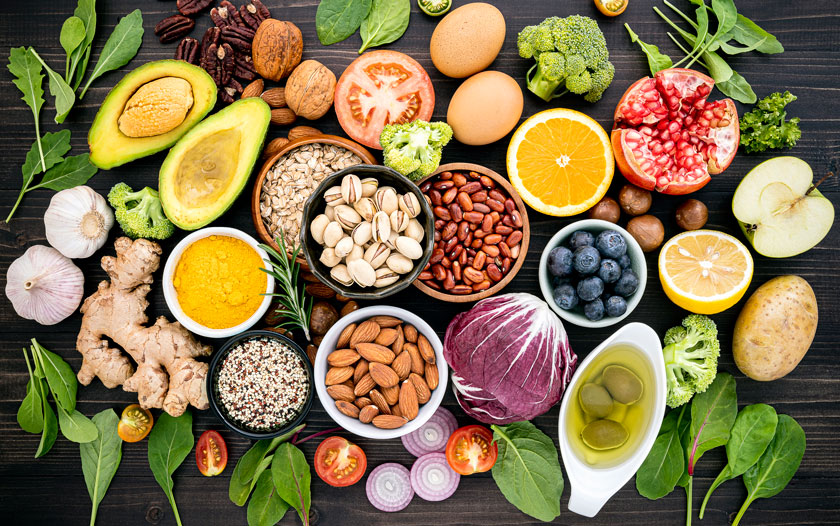What comes to your mind when we speak of malnourished children? A couple of decades ago, it would have been the image of children in a pitiful, starving state due to not having enough food to eat. Today, the image has changed, for a child could have plenty to eat, and still end up being malnourished. How is that so?
Malnutrition has taken a whole different meaning in these modern times, and an overabundance of unhealthy food is to blame. When children get lots of food that is bad for their health, and too little foods that are good for them, it spells malnourishment, whether we care to admit it or not. Yes, this means that a child could be obese, and yet malnourished. Countless children today suffer from what’s known as ‘hidden hunger’, which is a lack of essential nutrients – globally, at least half of all children under five suffer from it.
How can this be?
We live in a world of plenty today – plenty of food which are not all good for the human body. In today’s culture of profit-driven mass production of edible goods, we can hardly understand food labels anymore, for most of the food found at the supermarket or grocery store contain loads of chemically derived additives in their ingredients list, and they’re added to make the product tastier, flavorful and last long at the shelves. Many of these foods are also marketed as ‘health food’ meant for the consumption of very young children. They could be in the form of cereals, snacks, cookies, juice, etc.
On the other hand, we also have the convenience of take-outs, food deliveries, fast-foods, etc, which are popular among families worldwide for their famous tastes and attractive offers, special meal sets, and most importantly, their low price tags. So, malnutrition among children today may not be about a shortage of food, but rather, an over-supply of unhealthy food! It’s most unfortunate today that a child could be sorely lacking of important nutrients for his growth and development, despite being seemingly ‘well-fed’!
In many households, especially when both mum and dad are working, it is easier said than done to come up with nutritious meals for their children day after day. It is not impossible, however, particularly if one is well-informed about the nutrients a child needs and which foods contain them.
Let’s take a look at some of the important nutrients that may be missing from your child’s everyday diet and also, what kind of food to start including in his or her plate to close that nutritional gap.
Vitamin A
Vitamin A is essential for normal growth and healthy skin. It also helps in both night (dim light) and color vision.
Source: dairy products, yellow vegetables – carrots, corn, pumpkin, and green vegetables such as spinach, broccoli and cabbage.
Vitamin B
The vitamins in this group such as Thiamine(B1), Riboflavin (B2) and Pyridoxine(B6) play an important role in cell metabolism which is crucial in producing energy and keeping one’s overall health. The B vitamins are also important in red cell production.
Source: Meat (including fish and poultry), liver, milk, whole grains, bread, cereals, eggs
Vitamin C
Vitamin C increases resistance to infection, improves healing and strengthens the tissues in our body such as skin and muscle and other connective tissues. Iron absorption is also aided by this vitamin.
Source: Oranges and other citrus fruits, kiwi fruit, tomatoes, strawberries, broccoli and spinach
Vitamin D
Vitamin D is vital as a bone-builder. It helps to regulate calcium and phosphorus absorption for maintaining overall metabolism in the body. Therefore, a child with unhealthy bones and teeth may be deprived of vitamin D.
Source: Sunlight, fish oils, egg yolks and specially fortified dairy products.
Vitamin D deficiency
Vitamin D deficiency may affect young children from 6 months to 5 years old and also older people aged 65 above as well as pregnant and breastfeeding women. People who are not exposed to direct sunlight, including those who cover their skin or are confined indoors for prolonged periods may also be at risk. According to South East Asian Nutrition Surveys (SEANUTS) which began in 2009 and involved 16,744 children, almost half of their study population had low levels of vitamin D. In addition to that, more than a third did not obtain sufficient amounts of energy, calcium and vitamin D in the diet.
What is Lysine?
Lysine is one of the essential amino acids. Lysine helps improve appetite and will help improve a child’s food variety intake. Besides that, lysine enhances intestinal absorption as well as enhances calcium absorption for preventing osteoporosis. Unfortunately, many children do not get adequate lysine in their diet and studies have shown that those who were supplemented with lysine led to improved growth and weight gain.
Iron
This mineral is crucial for producing healthy blood as well as building strong muscles. For a growing child, one must have adequate iron intake.
Source: Meat (beef, turkey), liver and spinach
Calcium
Calcium is vital for bone development and strength. Calcium deficiency is capable of affecting growth due to abnormal bone development and may also cause osteoporosis in adulthood.
Good sources of calcium include: Milk, cheese, yogurt and vegetables such as spinach and broccoli
Maintaining a good appetite and healthy diet for your child
One could not overemphasise the importance for children to have a healthy, wholesome and balanced diet to ensure that they would get all the important elements.
Eating a variety of food in healthy amounts would achieve this aim. Children who are picky eaters have poor appetites or those on specific diets would benefit from receiving supplements. A good supplement can help improve a child’s appetite and prevent deficiencies in these important elements.
Reference:
- www.nhs.uk/conditions/pregnancy-and-baby/pages/vitamins-for-children
- unicef.org
- kidshealth.org/kid/stay_healthy/food/vitamin.html
- Effects of Lysine and Essential Fatty Acid Deficiencies on Bone Growth and Development in the Rat, Pakistan Journal of Nutrition 6 (3): 234-237, 2007



